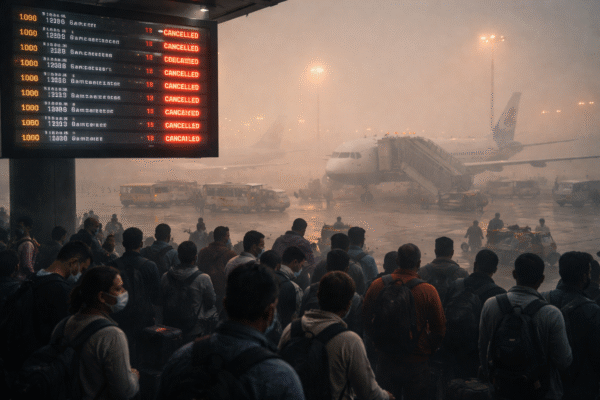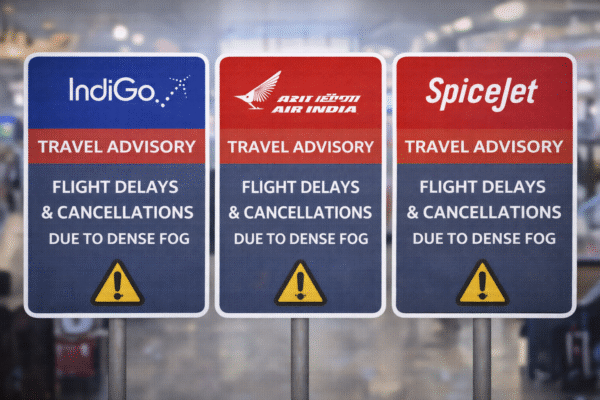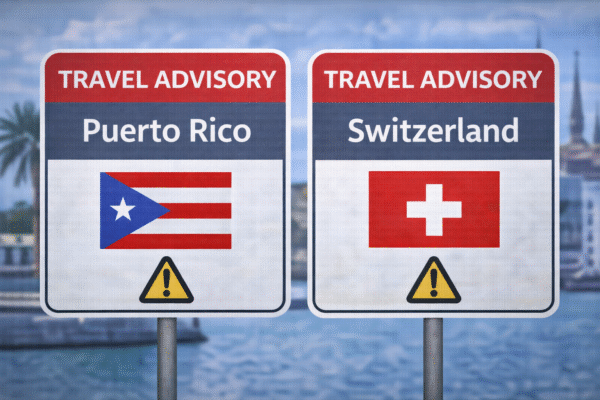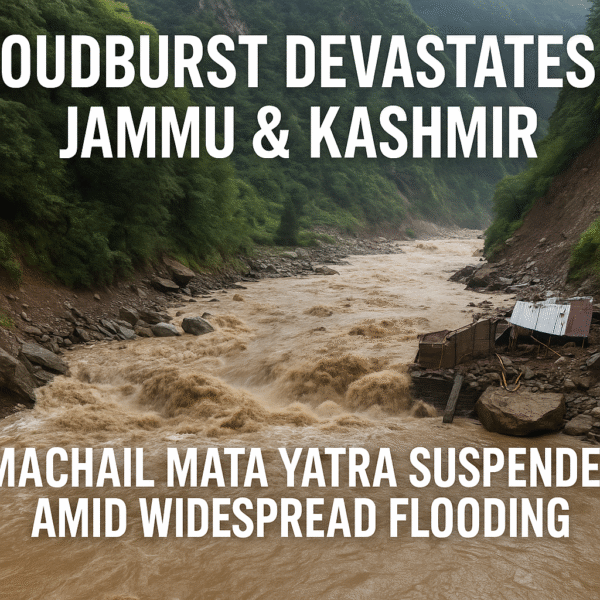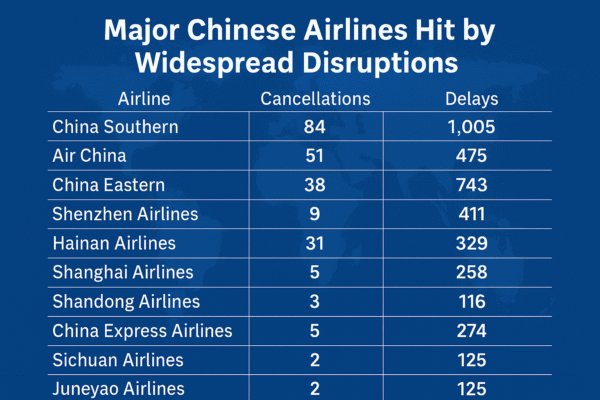A catastrophic cloudburst struck the remote Chosoti (Chashoti) area in the Paddar sub-division of Kishtwar, Jammu and Kashmir, on August 14, 2025, triggering flash floods and widespread devastation along the Machail Mata Yatra pilgrimage route. Over 30 people have died, 50 remain missing, and more than 100 have been rescued from the disaster zone.
Immediate Human Toll and Halting of Pilgrimage
The cloudburst hit when pilgrims had gathered near sacred shrines, including a langar (community kitchen) area, causing massive destruction to structures, vehicles, and access roads. The annual Machail Mata Yatra, a vital spiritual journey in the region, has been suspended indefinitely.
Chief Minister Omar Abdullah has briefed Union Home Minister Amit Shah about the situation. The NDRF, along with local administration, police, and military, have been deployed for rescue and relief operations. A control room has been established for coordination.
Rescue Operations Under Treacherous Conditions
Adverse terrain and continued bad weather—marked by the IMD’s forecast for intense rain and gusty winds—have greatly complicated rescue efforts. Helicopters and ground teams continue search operations, though access remains severely restricted.
Tourism and Local Economy Bear the Brunt
Jammu & Kashmir had seen a resurgence in tourism, with over 95 lakh domestic visitors in the first half of 2025 alone, supported by renewed safety and infrastructure measures.
However, the devastation of the yatra route and surrounding infrastructure delivers a fresh blow. Local businesses—hotels, shops, transporters—heavily reliant on pilgrimage traffic, now face a crisis due to disrupted travel and scale back in footfall.
Long-Term Implications and Climate Alarm
This tragedy reveals the growing vulnerability of Himalayan tourism to extreme weather events. Experts warn that unsustainable development combined with climate change is increasing both the frequency and scale of such disasters.
Proactive measures—like resilient infrastructure, community training, and sustainable planning—are vital to safeguard both lives and the economic future of regions like Kishtwar.
Conclusion: A Wake-Up Call for Sustainable Himalayan Tourism
The Kishtwar cloudburst is a tragedy with profound human and economic costs. With the Machail Mata Yatra halted, authorities must prioritize recovery while bolstering resilience against future natural disasters. Strengthening infrastructure, early warning systems, and sustainable tourism planning is critical to ensuring that the Himalayas remain navigable and safe for both pilgrims and tourists in the years to come.
For more travel news like this, keep reading Global Travel Wire





